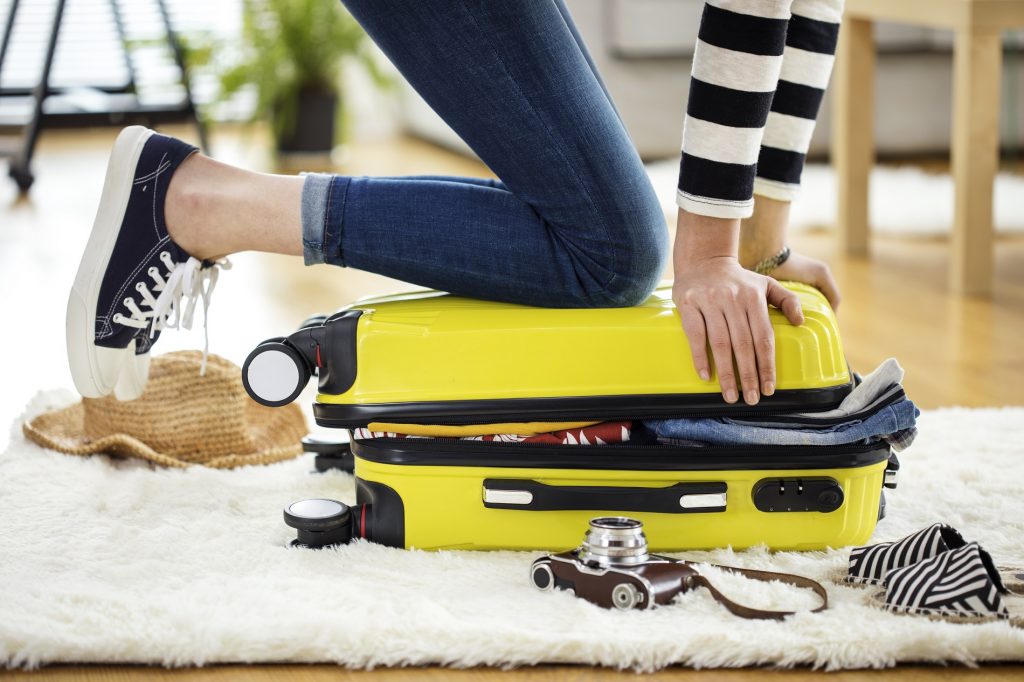There’s an endless list of things to be grateful for when traveling. Unique, delicious foods, mind-blowing vistas, and one-of-a-kind experiences await travelers with the courage to explore new cities and countries. Above these perks, traveling also helps you gain perspective and cultural awareness, shaping you into a well-rounded, empathetic, and experienced individual.
That said, these benefits don’t come without their fair due. Travel can be daunting.
Not only are you navigating unfamiliar territory, but the many procedures and regulations involved in navigating international borders can be confusing if you’ve only ever traveled locally.
The barriers to international travel shouldn’t withhold the joys of discovery from anyone. If you’re unsure what international travel documents you need or, even more simply, what is a travel document—this guide is for you. We’ll break down all the paperwork you need for your adventure and show how careful preparation and organization can save you time and stress when crossing into new countries.
International Travel Documents: What Documents Do I Need to Travel?
Being prepared and knowledgeable about your documentation is critical for the smoothest possible sailing into international destinations. We’ve assembled the following document list to ensure you’re fully equipped.
As a general rule of thumb—it’s better to have it and not need it than need it and not have it.
Proof of Identity: Passports, Visas, Driver’s licenses
The most pertinent document on this list is your passport, and we don’t need to tell you why you need it. But, if it’s been a while since you last traveled, you should check your passport from front to back. Why?
The expiration date should be at least six months after your return date and have at least two or more blank pages, or else you may not be permitted entry.1 Passports should also be in good condition, as customs may not accept damaged or deteriorated passports.
Make sure you also have a valid travel visa if your destination requires it, and a driver’s license or national ID. Why bring a driver’s license and a passport? The additional form of valid ID safeguards the unlikely but genuine possibility that you lose your passport and have to work with your embassy to prove your identity.
Insurance Details: Travel and Medical
You never know what will happen on your trip. But when the unexpected happens, especially in unfamiliar territory, navigating unforeseen situations can be incredibly stressful (and expensive).
You may opt to protect yourself and your family with a health insurance or travel insurance plan for your trip. A common question many travelers have is, “Is travel insurance worth it?” Remember, most U.S. health insurance plans are incompatible with foreign hospitals and clinics, so plan accordingly to purchase a standalone package if you want one.
Travel tip: if you purchase travel insurance have your insurance ID cards or documents proving your coverage printed and in a safe place. The goal is to save time scrambling for the correct phone numbers or documentation in an emergency.
Additional Documents: Prepare for Anything
The following documents are situational but can be equally as essential as the previous items, depending on your trip. Preparing accordingly can ensure you spare yourself the stress of getting held up at the border or denied entry into your destination.
- International Driver’s Permit – Planning on hitting the road and exploring via a rental vehicle? Some countries may require an International Driving Permit (IDP), so be sure to apply for one ahead of time if needed and bring your document with you if you plan on driving.
- Return ticket (and itinerary) – Some countries might require proof of authorized return travel before being allowed entry. And while having your itinerary printed out and on hand isn’t mandatory, it is handy for pulling confirmation numbers, estimated arrival times, and more.
- Medication documentation – Remember that different countries have different medication regulations, and some U.S. medications are illegal in other nations. We recommend checking with the embassy of the country you’re traveling to and see if they recommend a notice or document from your physician for your medication.
- Health documentation – In response to the COVID-19 pandemic, new health documentation procedures were established to keep individuals safe while traveling internationally. While some of these guidelines have been relaxed or reduced, officials can reimplement them quickly. Check the latest requirements before departing for a smooth transition to your destination.
Additional Safety and Organization Tips for International Travel Documents
You may feel vulnerable now that you’ve gathered your essential documents. After all, if you misplace your bag, a lot of your sensitive information and important documents are at risk of exposure.
Here are some additional tips for keeping your travel documents safe and organized.
- Make copies – If you don’t want to bring multiple forms of photo ID on your trip, an alternative is to make and bring photocopies of your passport. These copies can help you if you lose your passport and must prove your citizenship.
- Organize – While it may seem common sense, your essential travel documents must be organized and accessible. Especially since travel can be frantic and unpredictable, taking the extra time before your trip to collect your documents into an organized folder or bag can relieve some of the stress of feeling underprepared and help you find what you need when you need it.
- Secure placement – Make sure the most essential documents are always in a safe place on your person or your luggage. For example, don’t keep your passport or any document with personal information in your back pocket where it can easily fall out or be taken. That said, all
ofyour documentation should be readily accessible if you need it in a pinch.
Lastly, if you’re wondering how early you should get to the airport, consider factors such as airport security wait times, check-in procedures, and potential traffic delays. International airports, in particular, often have long waits at security checkpoints and other key areas, so arriving well in advance can help you navigate these potential delays and ensure a smoother travel journey.
Maya Mobile: Your Partner for Seamless Travel
The best thing you can do for effortless entrance into your dream destination is gather, organize, and secure your essential travel documents. And always check official websites for travel restrictions and updates. The next step? Order a travel eSIM from Maya Mobile so that your phone is travel-ready.
In 5 minutes, you can be fully travel-ready and mobile. Order an unlimited or prepaid plan from Maya Mobile, open your email, and grab the QR code. After a painless setup, your phone will be ready to follow you anywhere.
Learn more about Maya Mobile’s 194 different destination plans and check your phone’s compatibility today.
Sources:
- U.S. Department of State. Traveler’s Checklist. https://travel.state.gov/content/travel/en/international-travel/before-you-go/travelers-checklist.html





